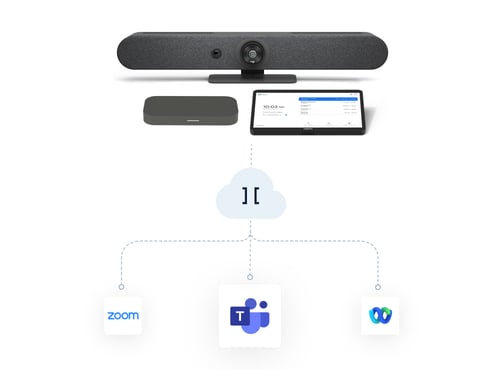Have you seen the movie “Snowden”? In the film, the infamous Edward Snowden (contractor for the NSA) covers his laptop camera with a band-aid, clearly portraying his fear of cyber criminals and of being hacked. For the majority of people, government espionage and international spies are far away, but corporate espionage is still within reach.
Here are 3 specific points to consider when looking for secure video systems:
- Secure calls - making sure someone uninvited doesn't join your call/meeting
- Secure media - making sure content shared during the call is safe (encrypted)
- Preventing "denial of service" attacks on your devices - making sure someone does not hack the device itself and interrupt its connection to the network
Keep your private meetings private
Having a secure solution will make sure no one is listening in on your meetings. Many think of internet security as of preventing unauthorized access to files and internal computers, though the basic principles of security can be used to secure videoconferencing endpoints and infrastructure from unwelcome access as well.
Video is an incredibly powerful medium, bringing people face-to-face in real time around the world. Imagine the consequences of a sensitive and important video meeting leaking out and to the public and appearing on YouTube or even worse - in a court of law. It could have dire consequences for brand perception and cost your company a lot of time and money in damages.
Protect data
In these GDPR times, the consequences of losing someone else's data can be huge.How does this apply to video? Protecting data in video systems includes protecting the personal data of people using the service, such as their location through IP addresses or their name be it through joining a meeting or through the video system's contacts directory.
This year, Forbes reported that cybercrime costs are projected to reach 2 trillion USD by 2019. To protect yourself from data breaches and their associated costs, choosing secure technologies like videoconferencing services can play a huge role.
People are increasingly using two different devices (such as personal devices and tablets) to access various work tools and services, which can raise security concerns. With videoconferencing, sensitive or proprietary information is regularly exchanged, and employers need to feel confident that no one else can access information without permission.
But what are the potential risks of non-secure communication? And, what steps can IT departments take to improve the security around live video calls and conferences, as more and more people dial in from anywhere?
Keeping partners at ease
If someone heard you had a major security breach, they would probably think twice before signing on with you - or even worse - some of your existing customers might leave you. It is a well-known fact that it costs far more to attain a new customer than keep an old one, and you definitely want to avoid losing existing customers over something that can be prevented.
Investing in security is essentially an investment in keeping your clients and nurturing the relationship to have with them. Don’t let the security of your videoconferencing solution jeopardize the trust you’ve built.
“It has increased our customer satisfaction because we are able to communicate faster and more reliably than before. It has also reduced our time to market because we meet with the development team more frequently now,” says Eric Larsen - Head of Operations at BankID about using a secure system.
It is safe to say that having a secure system will never be particularly bad for you. In fact, neglecting this very crucial aspect of picking a videoconferencing system could cost you in money, time, customers and brand awareness. Invest in the future with a secure videoconferencing system, because it’s better to be safe (and secure - pun intended) than sorry.
- Meet & collaborate securely





